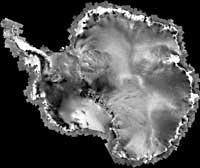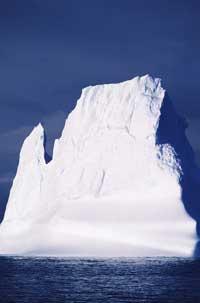Invaders in Antarctica
2006/07/12 Carton Virto, Eider - Elhuyar Zientzia

Antarctica has not invaded any army, no. As for the degree of compliance, the Antarctic Treaty is currently one of the most successful international treaties. It has kept the continent to this day out of political turnover and economic exploitation and we hope it will continue the same. Others are the invaders who have come to Antarctica. Animals, plants and microorganisms outside Antarctica are the invaders that have raised concern among experts.
So far, cold weather and harsh living conditions have isolated Antarctica, extremely extreme conditions for the success of foreign species. But things are changing. On the one hand, global warming can facilitate the passage of species and allow 'by themselves' to reach Antarctica. On the other hand, every year more boats and people come to Antarctica. And next to them, more exotic species. In fact, studies conducted in different parts of the world have highlighted the direct relationship between the number of visitors to isolated areas and the number of exotic species.
Collecting exotic species does not mean that they become invasive. It may not adapt and disappear, but also the opposite: open too much and endanger your ecosystem. This second phenomenon is occurring in many parts of the world. Antarctica is therefore not an exception, not the first case, but because it is a very unique region, it is considered a natural laboratory, an example in many fields of research. Therefore, researchers want to take action as soon as possible.
About a hundred exotic species have already been identified in the islands near Antarctica, causing in some cases significant damage. However, only a few have yet arrived on the continent, so researchers consider that we are in time to anticipate. For the time being, the Antarctic Treaty Advisory Council has taken the first steps to tighten control measures and, first, has named exotic species more priority.

At the same time, a new guide has been proposed for ships sailing the Antarctic Ocean, since the water used by large ships as ballast is one of the most common sources of foreign species. For safer navigation when not loaded, ships load the container with water and transport up to a lot of living things from one place to another. To prevent these living beings from entering Antarctica, the advisory council has proposed changing ballast water before reaching Antarctica. But it is not up to them to make the proposal a norm.
Finally, all visitors arriving in Antarctica also want to design a “cleaning protocol”, especially regarding tourism. In a short time tourism has grown a lot. Antarctica currently has 31,000 tourists a year – twice as many as five years ago – and is expected to reach 100,000 in a decade. Perhaps the human being is the first invasive species to be controlled, although at the moment they have not managed to move the proposals of tourist limitation forward.
Published in the newspaper Berria.




